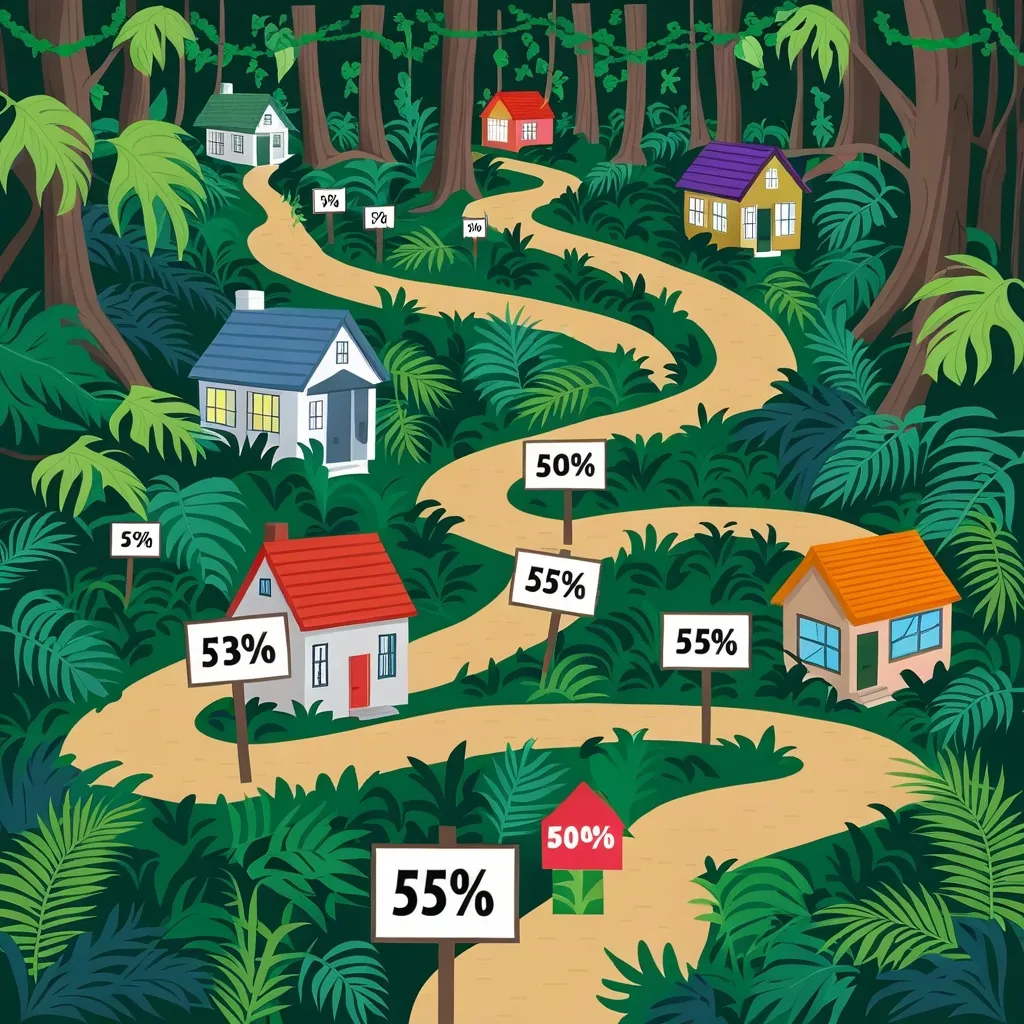Diving into the world of mortgage rates can feel like wandering through a dense jungle, but trust, it’s a journey worth taking if you’re eyeing that dream home or considering a mortgage refinance. These rates aren’t just numbers on a page; they shape the cost of your home loan, impacting your monthly bills and how affordable that cute bungalow or sleek condo really is.
The Lowdown on Mortgage Rates
In the simplest terms, mortgage rates are what you pay to borrow cash to buy a house. Picture it like this: you borrow $200,000 with an interest rate of 5%. Over the first year alone, you’re tossing $10,000 just on interest to your lender, not counting a chunk of the principal. Those percentage points are like the VIP passes to your homeownership journey—they dictate how expensive that dream truly becomes.
Why Interest Rates Matter
The interest rate is the boss of your mortgage game. A bump in the rate means more sweeping out of your wallet every month. On a $200,000 mortgage, a cozy 4% rate might have you shelling out about $955 monthly. But pump that rate to 5%, and suddenly you’re dishing out $1,073 every month. That seemingly tiny percentage could be the hero or villain of your budget story, altering what homes you can really afford to eye.
Affordability Takes a Hit
When interest rates soar, they’re like party crashers making it harder to afford the bash. Lenders typically offer smaller loan amounts if rates are steeper since the inflated monthly payments shrink what you can afford. This means you might need to set your sights on less expensive homes or kiss that waterfront view goodbye.
Mortgage Types: Fixed vs. Adjustable
In the mortgage arena, two main players duke it out: fixed-rate and adjustable-rate mortgages. With a fixed-rate mortgage, you get stability—knowing your rate stays consistent over the loan’s life, whether it’s for 15 or 30 years. Besides offering peace of mind, they often come with slightly higher rates than their adjustable-rate cousins.
Adjustable-rate mortgages (ARMs) flirt with lower initial rates, but come with a twist—they adjust based on market whims. This changeability can shave initial costs but carries future uncertainty. One year you’re on solid ground, the next, the rate might swing higher, upping your monthly dues unpredictably.
Economic Twists That Change Rates
Mortgage rates don’t just rise and fall—they tango with economic shifts. Inflation is a prime mover; when it climbs, lenders adjust rates to stay afloat amidst the shrinking purchasing power. A 5% mortgage rate during a 2% inflation rate nets the real value at just 3%, so lenders tweak rates to safeguard their gains.
Economic growth also plays maestro. Strong growth ignites more homebuyers pouring into the market, spiking demand and nudging rates higher. Recession or slow growth pulls the opposite effect—demand drops and so do rates.
The Federal Reserve’s Invisible Hand
The Fed doesn’t dial mortgage rates directly, but its interest rate policies send ripples through the waters. When the Fed hikes short-term rates, it hikes up borrowers’ costs, eventually nudging mortgage rates up the scale too. The whole financial relay works to balance economic pressures in the big picture.
Bond Market’s Influence
Behind the scenes, mortgage rates are tethered to the bond market, especially mortgage-backed securities (MBS) and U.S. Treasury bonds. Lenders peg mortgage rates to these bonds’ yields. Add in the mortgage spread—the gap between Treasury rates and MBS rates—and lenders round up the final mortgage rate with a little extra margin for good measure.
Personal Finance Matters
Your wallet health plays into the mortgage rate you’ll snag. Stellar credit scores unlock better rates as lenders see you as a low-risk bet. Plus, factors like loan-to-value (LTV) ratio and debt-to-income (DTI) ratio pitch in. Lower LTV and DTI ratios can spell lower rates, giving your budget a sweeter deal.
Real Estate Investment Strategies
For real estate investors, mortgage rates are more than a passing number—they shape strategy. Lower rates mean cheaper financing, better cash flow, and more potential buyers, inflating property values as the cherry on top. When rates spike, costs rise too, tightening net income belts and trimming returns on investments.
History Lesson Meets Strategy
Peeking into past trends and economic shifts helps in making savvy choices. Keeping tabs on inflation predictions and Federal Reserve comments gives a heads-up on rate changes. This foresight helps tweak strategies, ensuring smooth sailing in the often choppy waters of real estate decision-making.
Tactics to Tame Rates
High rates cramping your style? There are workarounds. Paying for discount points is one way—these pre-paid interest fees can nip your rate down. For example, shelling out a discount point on that $200,000 mortgage might slide your rate down by 0.25%, saving big bucks longer term.
Another tip is flirting with an adjustable-rate mortgage if you’re planning a move or refinance soon. Sure, it’s a gamble—rates could rise—but in the short term, it feels like a win.
Navigating the Mortgage Maze
Understanding mortgage rates can seem like cracking an ancient code, but with these insights, you’re better armed for the hunt. Knowing how economic factors and personal finance play in, you’re more likely to make smart moves. Whether you’re stepping into the housing market for the first time or adding another notch to your real estate portfolio, staying laser-focused on these rate trends could be your secret weapon.
By keeping that radar tuned to interest rate shifts and smoothing out your strategies accordingly, you’ll keep your financial journey on course, come what may in the dynamic world of real estate and loans.






